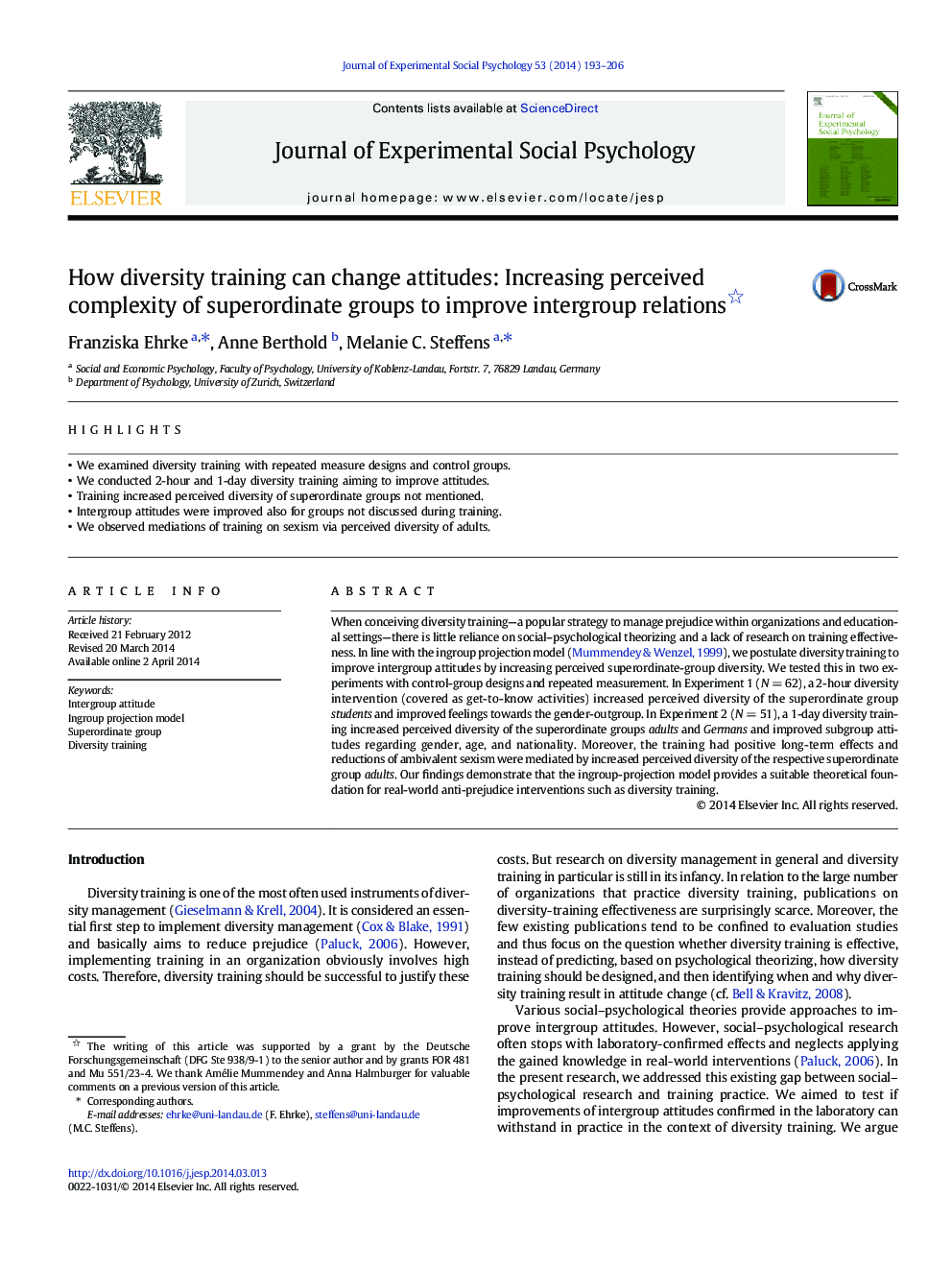| Article ID | Journal | Published Year | Pages | File Type |
|---|---|---|---|---|
| 947841 | Journal of Experimental Social Psychology | 2014 | 14 Pages |
•We examined diversity training with repeated measure designs and control groups.•We conducted 2-hour and 1-day diversity training aiming to improve attitudes.•Training increased perceived diversity of superordinate groups not mentioned.•Intergroup attitudes were improved also for groups not discussed during training.•We observed mediations of training on sexism via perceived diversity of adults.
When conceiving diversity training—a popular strategy to manage prejudice within organizations and educational settings—there is little reliance on social–psychological theorizing and a lack of research on training effectiveness. In line with the ingroup projection model (Mummendey & Wenzel, 1999), we postulate diversity training to improve intergroup attitudes by increasing perceived superordinate-group diversity. We tested this in two experiments with control-group designs and repeated measurement. In Experiment 1 (N = 62), a 2-hour diversity intervention (covered as get-to-know activities) increased perceived diversity of the superordinate group students and improved feelings towards the gender-outgroup. In Experiment 2 (N = 51), a 1-day diversity training increased perceived diversity of the superordinate groups adults and Germans and improved subgroup attitudes regarding gender, age, and nationality. Moreover, the training had positive long-term effects and reductions of ambivalent sexism were mediated by increased perceived diversity of the respective superordinate group adults. Our findings demonstrate that the ingroup-projection model provides a suitable theoretical foundation for real-world anti-prejudice interventions such as diversity training.
